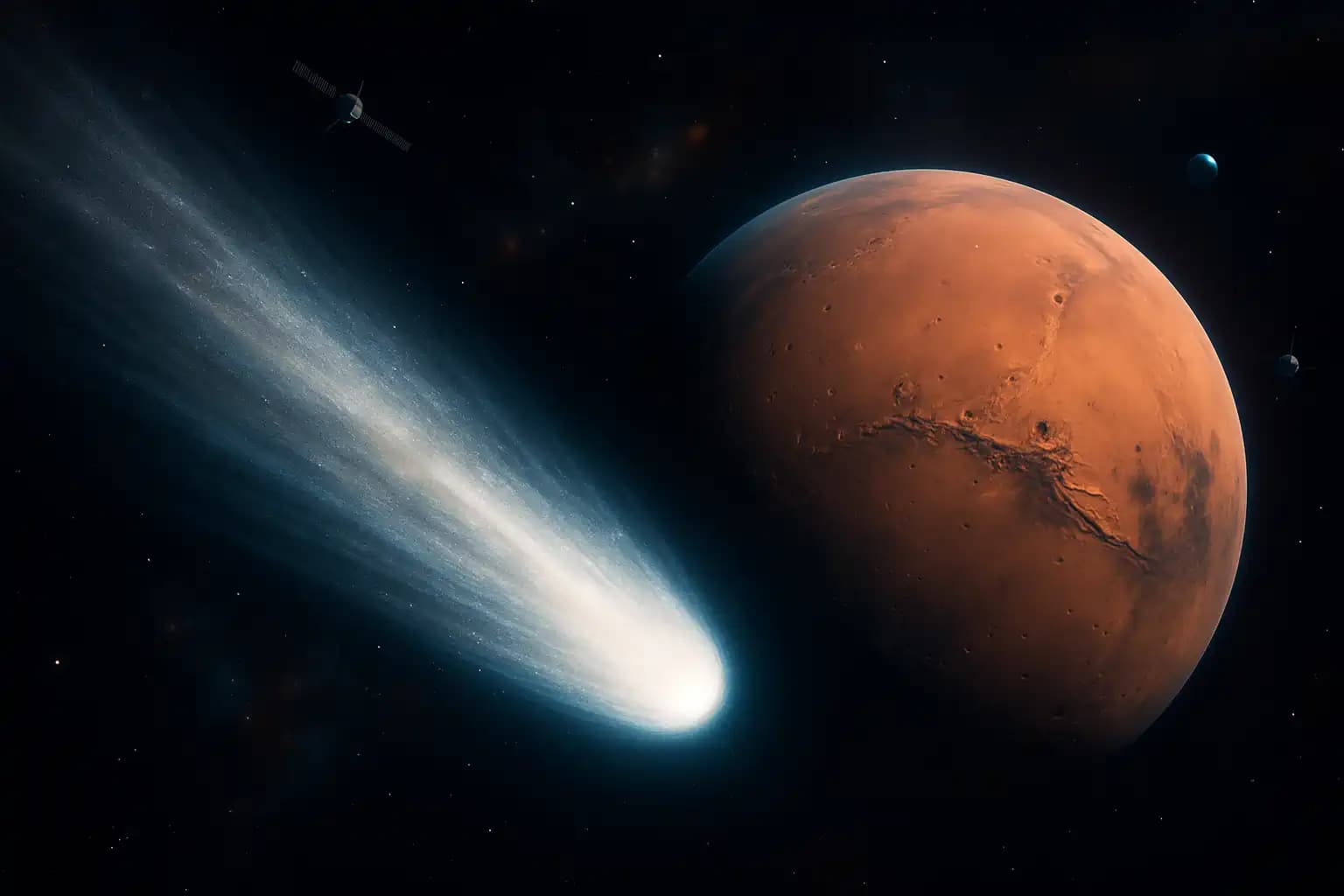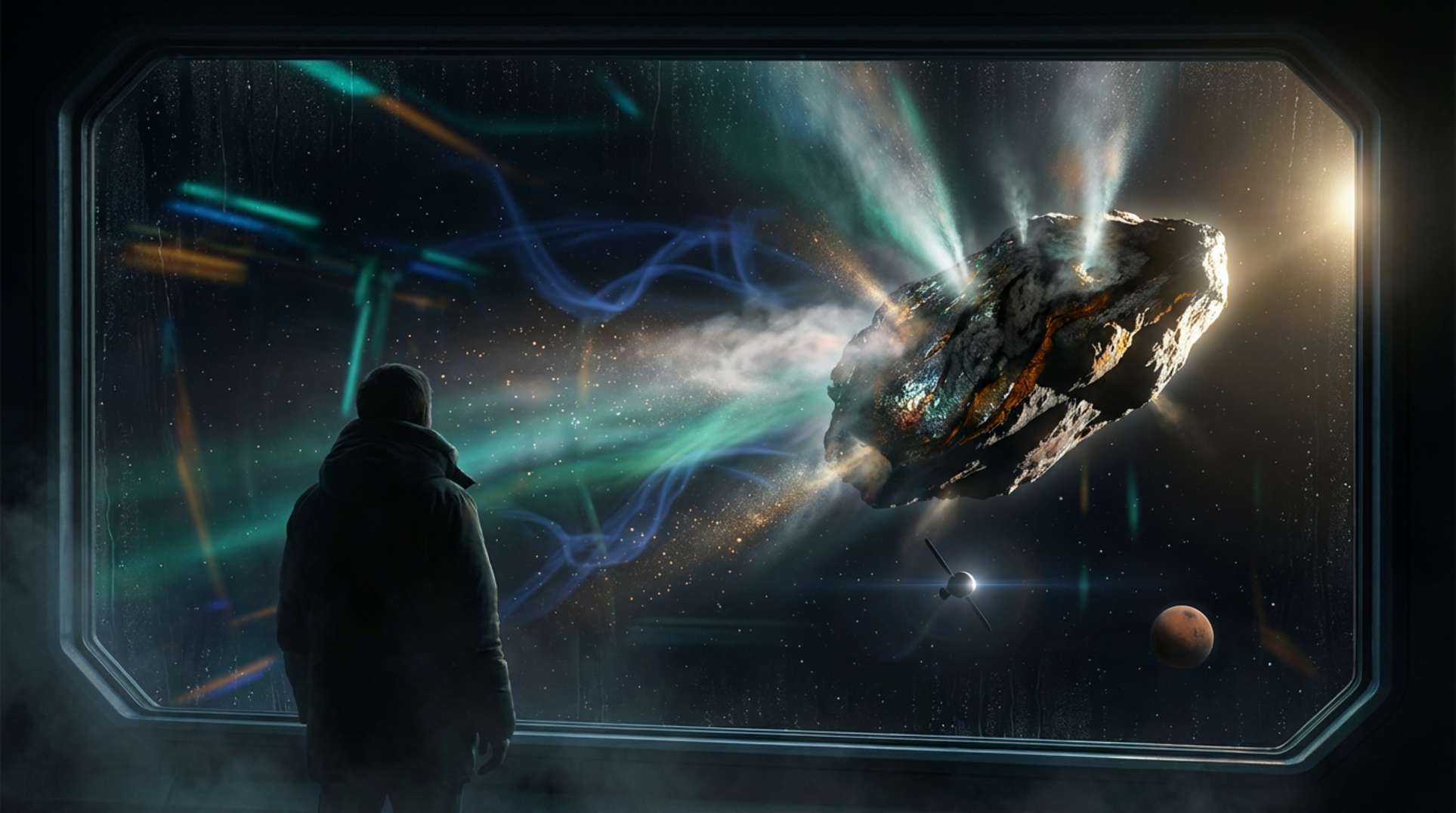Something massive and strange is passing through our solar system: 3I/ATLAS. Discovered in July 2025, this object has a nucleus about the size of Manhattan. It has sparked a cosmic whodunit capturing global attention. Few stories blend hard science, outlier hypotheses, and widespread curiosity like this one. Harvard astrophysicist Avi Loeb has emerged at the center of the debate, questioning what, or who, might be passing by.
What Scientists Know: The Hard Data on 3I/ATLAS
3I/ATLAS is the third interstellar object spotted in our cosmic backyard, following ʻOumuamua and 2I/Borisov. What sets this new arrival apart? NewsNation estimates its size at roughly 30 kilometers and its mass at 33 billion tons—three to five orders of magnitude more massive than previous interstellar visitors. It was detected speeding into the solar system at 61 kilometers per second (about 137,000 mph). By the end of October, it will swing just inside the orbit of Mars. Yet, according to the NASA/JPL field report, it poses no danger to Earth. Its hyperbolic escape trajectory means it’s just passing through.
Comet—Or Something Beyond? Anomalies Feed Speculation
What makes 3I/ATLAS controversial? It exhibits unusual features in both composition and flight path. In his July 2025 arXiv paper (cited in Fox News), Loeb points to anomalies such as its large size and a trajectory remarkably aligned with the solar system’s plane. There’s also a lack of detectable chemicals typical of known comets at this stage. Despite this, a recent analysis indicates that the mainstream consensus remains that 3I/ATLAS is almost certainly a comet, albeit an impressive one.
This controversy mirrors the speculation and skepticism surrounding recent international disclosures, including government UFO testimony and AI-driven deep-dives into reality itself (see this consciousness debate).
Avi Loeb’s Alien Artifact Hypothesis
Loeb, never shy from headlines, gives 3I/ATLAS a “30 to 40 percent” chance of not being natural, as reported by Futurism. He argues, as he did with ʻOumuamua, that certain orbital and compositional oddities might imply artificial design—a sort of cosmic driftwood from an alien civilization. However, Loeb concedes in his Medium blog that the odds favor a mundane (but scientifically thrilling) comet. Most astronomers agree: it’s science fiction until the data prove otherwise.
As more interstellar interlopers surface from new telescopic arrays in the coming decade, Loeb’s call for open-minded, rigorous analysis resonates. This boundary-pushing inquiry intersects with coverage on defense tech and the philosophical provocations of contemporary media polemics.
Trajectory, Visibility, and the Era of Interstellar Visitors
Trajectory models highlighted by NASA Science show that 3I/ATLAS is on a hyperbolic path. It originates from outside the solar system, passes closest to the Sun just inside Mars’s orbit, and then shoots away, never to return. The Hubble Space Telescope has captured images showing a dust cocoon enveloping an icy core, further distinguishing 3I/ATLAS from typical comets, though not tipping the evidence toward artificial origins.
If future in situ sampling or spacecraft flybys reveal surprises, the “alien artifact” debate could reignite. For now, 3I/ATLAS serves as a case study in how scientific consensus forms—and is tested—whenever something truly strange appears at the edge of our understanding.
Why does it matter? These debates reflect not just the state of the cosmos but our collective imagination. Each interstellar object fuels hopes and fears about extraterrestrial contact, mirroring broader societal unease regarding breakthroughs and uncertainties in fields from technology to geopolitics. For continuous, evidence-based coverage, explore Unexplained.co—your source for the boundary between science and speculation.




